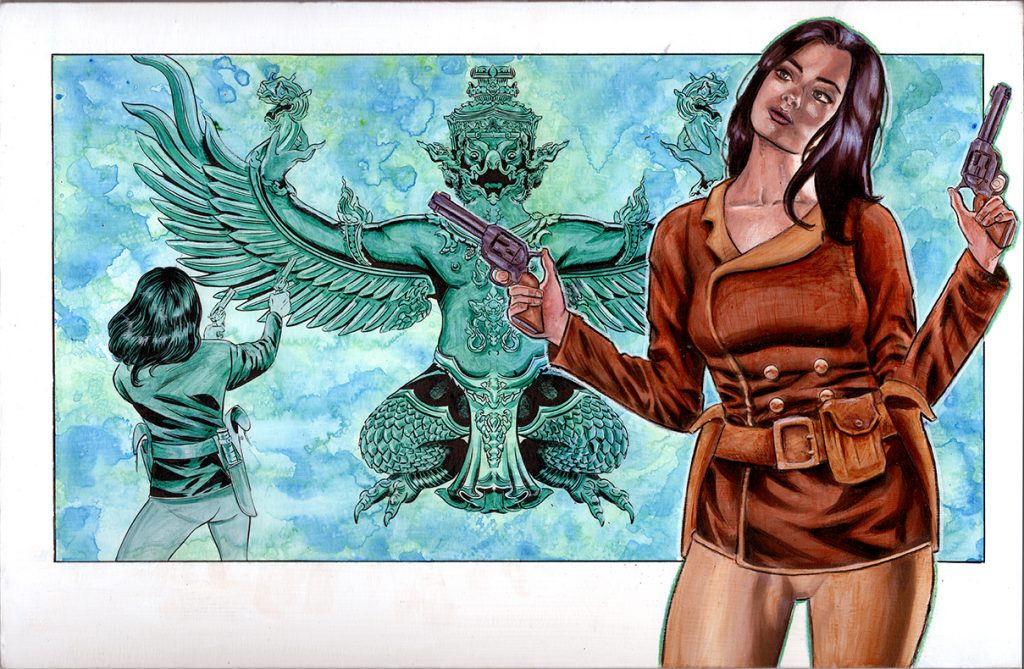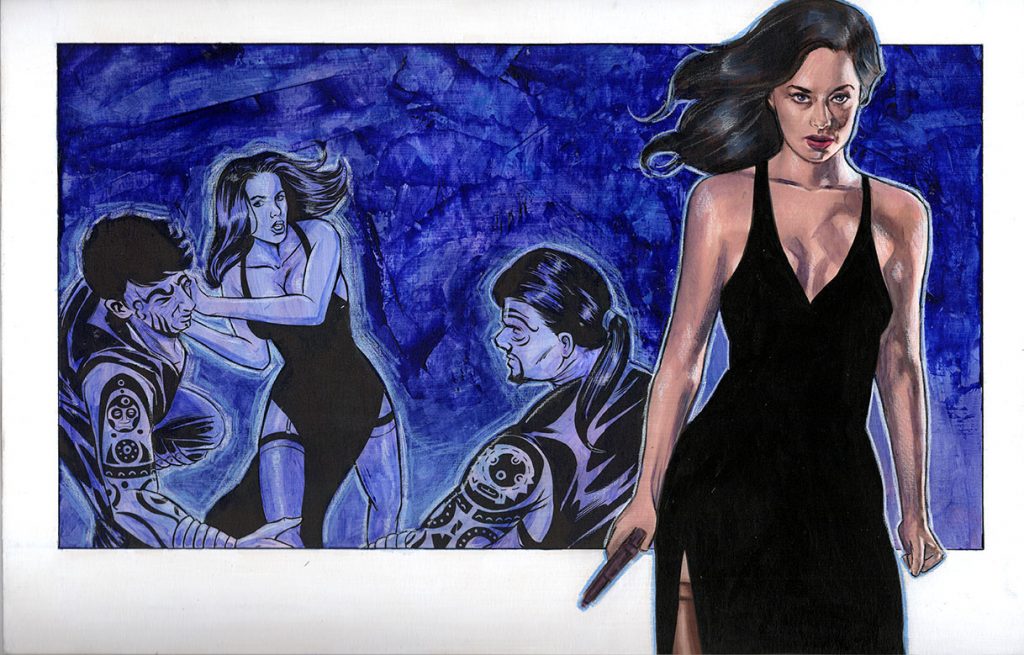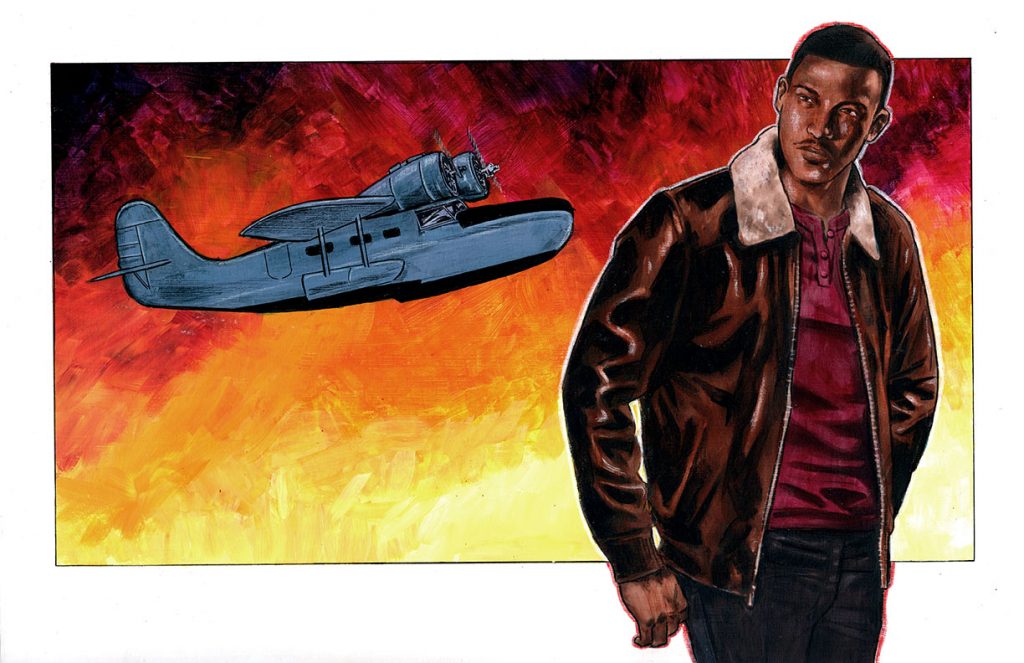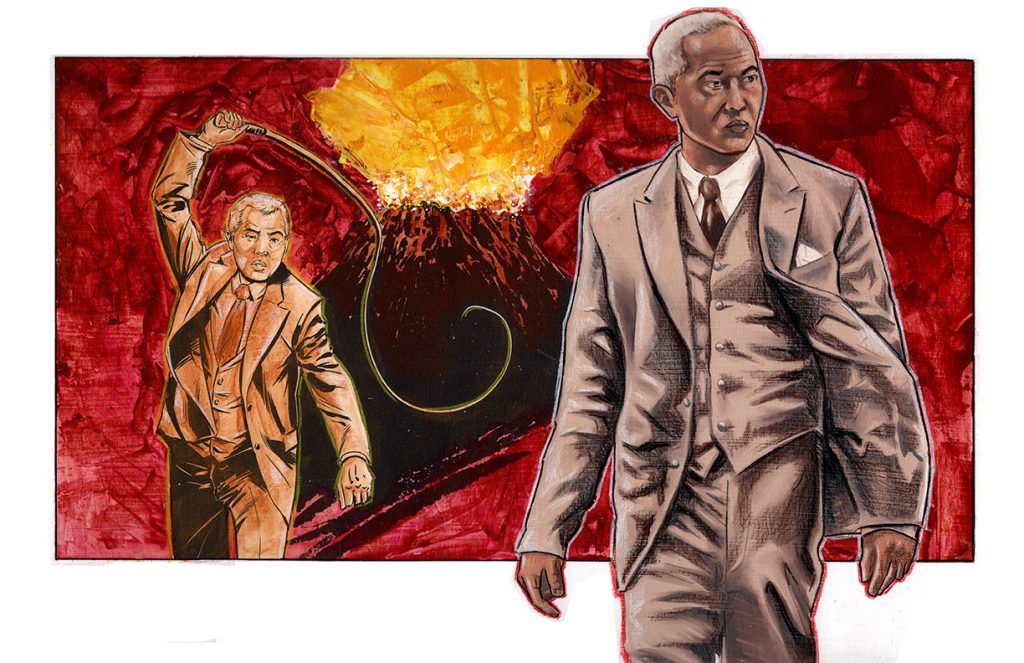or “Steve Takes a Painting Class”
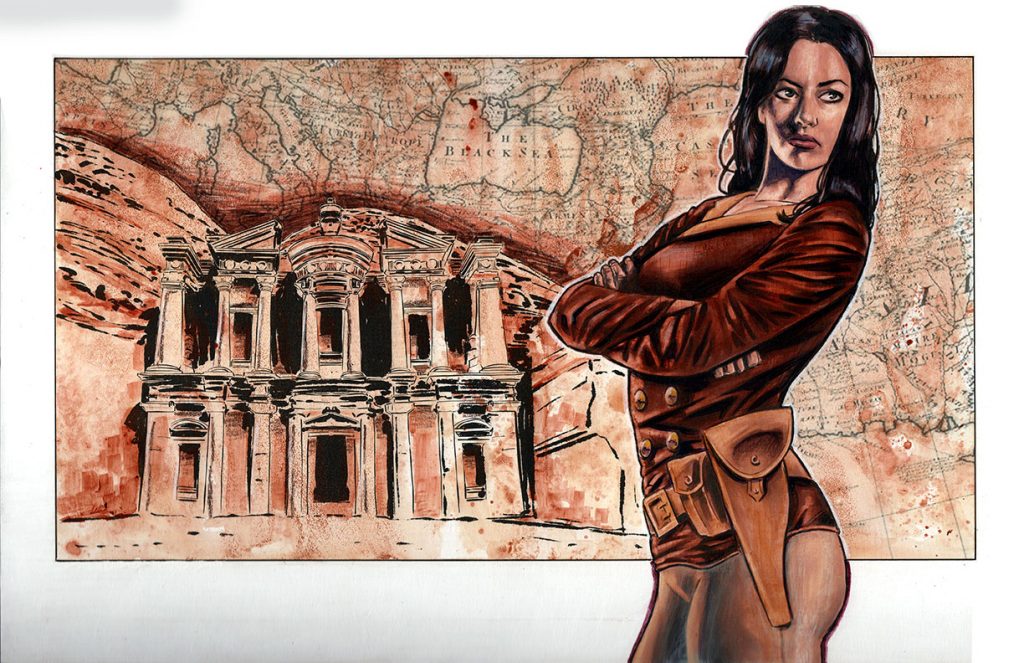
From January 2022 to May 2022, I took an acrylic painting class. I hadn’t taken a class in traditional media since the mid/late 80s—a class in oil painting. In the years since, I taught myself watercolor and digital painting.
Here’s to adventure!
The first half of the semester was dedicated to workshops on techniques and exploratory exercises. Honestly, I’d have been satisfied if that’s all the class was. Too often, as creatives, we get caught up in the need to make art with purpose. There’s something incredibly exciting about experimenting and seeing where it goes without any further expectations.
For the second half of the semester, we were tasked with creating a series of paintings that incorporated some of the techniques we’d been workshopping. I wanted to apply some of this newfound knowledge to my existing stories/characters/worlds, so I opted for a series of Athena Voltaire pieces. I specifically wanted them to feel like a cross between lobby cards and concept art.
While my professor wasn’t exactly thrilled with my illustrative tendencies and tastes, she let me roll with this concept.
Since 2013, my workflow has included a significant digital component and I wanted to see if I could incorporate digital underdrawing to this series, as well. More experimenting!
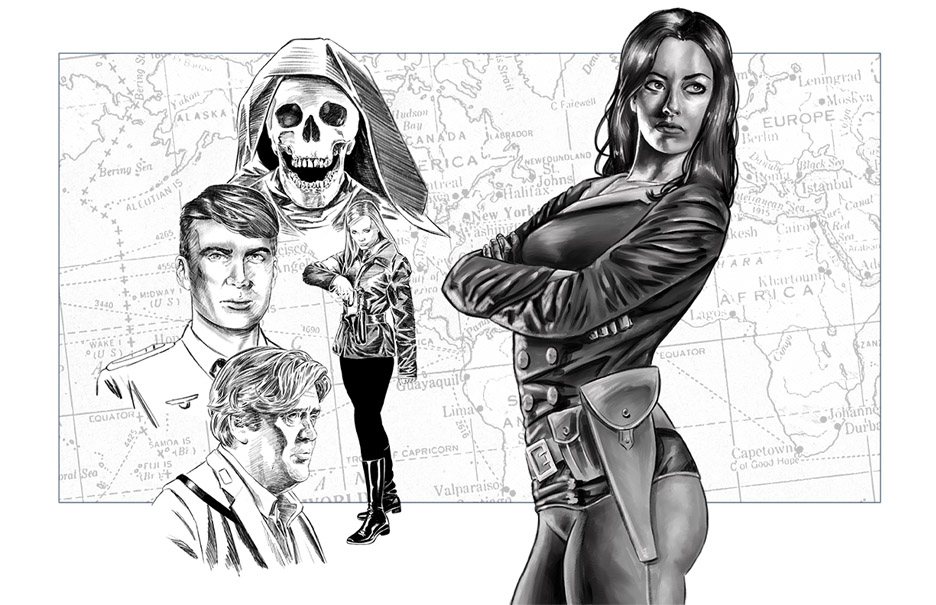
I created a tonal underpainting digitally (grayscale), changed the art to sepia (sepia underpaintings have been a part of numerous traditional artists work for centuries), and printed that out on 2-ply bristol board, using my inkjet printer.
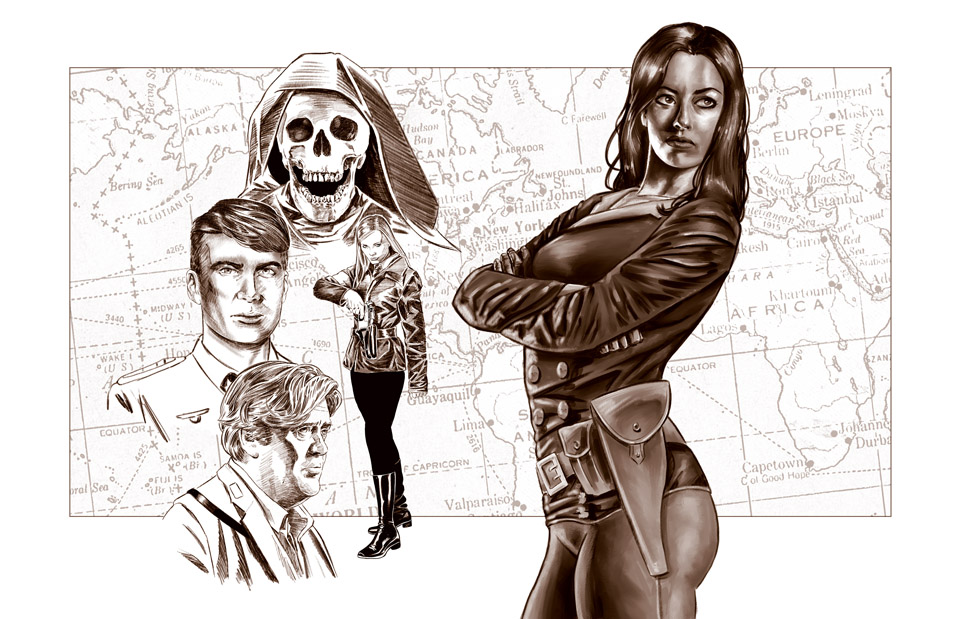
I watered down some gesso to seal the image. Watering it down allowed the line work to show through.
Anyone with an inkjet printer knows what happened next: the image smeared once liquid was applied on top of it. And anyone who’s gessoed bristol board knows the other thing that happened: the paper curled up.
Through experimentation, I settled on the process: print to bristol board, apply a couple coats of spray fixative (to keep the image from smearing), spray mount the bristol to foam core board (to keep it from warping), and seal it with clear gesso (allowing the complete digital underpainting to be visible).
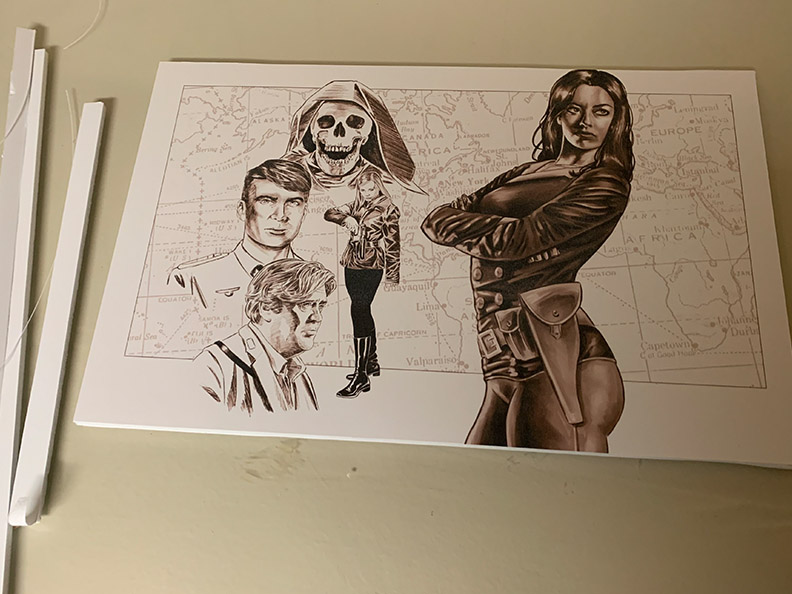
Once the process was in place, I was able to start layering thin washes to build up value. Backgrounds were where I applied the experiments we’d workshopped in class: spatter, dripped and poured paint, and impasto painting.
Six paintings in all. Here’s how the rest of the series came out:
